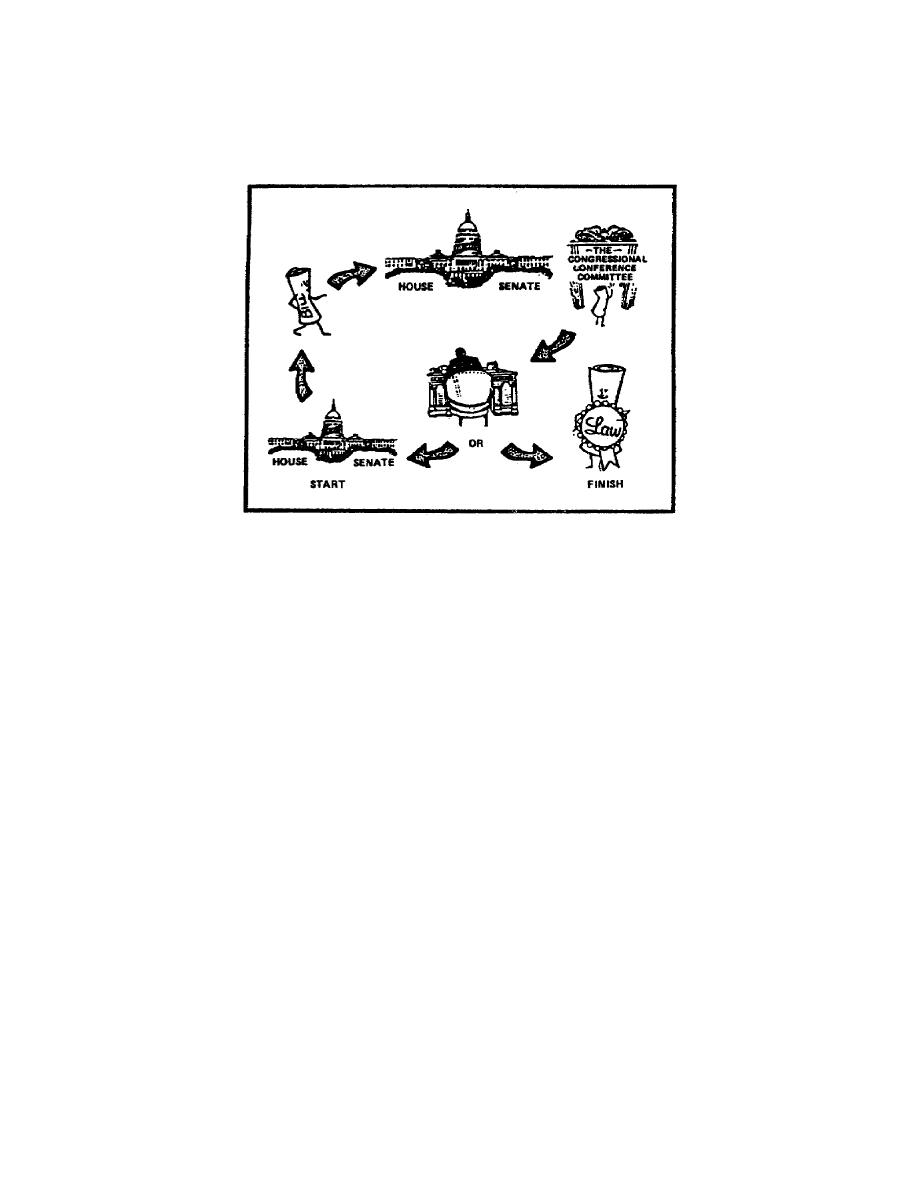
the rough draft. When you are satisfied the chart presents the process,
ink the primary and any secondary flow lines and symbol lines.
Remember, the primary flow lines are the heaviest (darkest) lines on the
flow chart.
Figure 136. Illustrative flow chart
(a) Lettering the flow chart. The flow chart is now ready for
the lettering. Draw the necessary guidelines and apply the lettering
using the freehand method, any of the mechanical methods (Leroy or Wilco
lettering sets), or prepared, pressure sensitive letters.
(b) Reviewing the finished flow chart. The flow chart you
produce should present the process and each step in the process. It
should also have balance, symmetry, proportion, and clear flow lines.
Take a moment to review figure 135, the flow chart supplying the unit
that the DA has just activated. This chart presents each step in the
process, has balance, symmetry, proportion, and clear flow lines. By
following the flow lines you understand each step in the process.
Follow the authorization for unit equipment in the chart. It starts at
the top of the chart and shows that the Department of the Army issued a
letter of activation for the unit. Following the flow line that shows
authorization for unit equipment (the left side of the chart), you see
the next step in the process is the major Army command. The chart shows
that the major Army command has three functions it must perform: (1)
prepare a general order and forward it to the Army logistics command for
1-43
SS0530



 Previous Page
Previous Page
